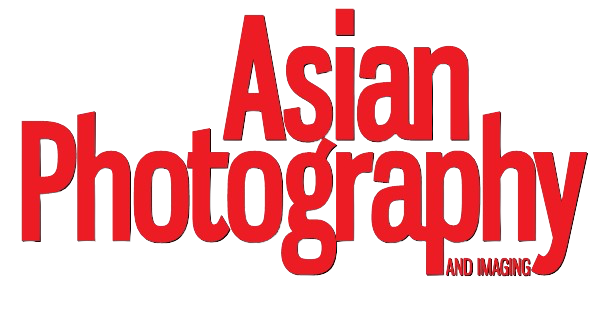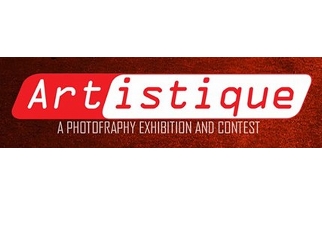“For the longest time photography in India has been considered as a ‘profession’ to make ends meet. While the changing times have broadened the viewer’s acceptance of art forms like painting, sculpting, movies among other things, photography seems to have been stuck in a timeless cycle. In a stark contrast, the visual medium of picture-making is considered and perceived as an art form internationally. Then why should India be any different? Hence, we have entered into a journey with our initiative Artistique to push photography as an art form,”
Bhavya Desai, Editor and Group Head, Asian Photography and SAP Magazines
The word photography comes from two ancient Greek words: photo, for “light,” and graph, for “drawing.” “Drawing with light” is a way of describing photography. When a photograph is made, light or some other form of radiant energy is used to record a picture of an object or scene on a light-sensitive surface. Early photographs were called sun pictures, because sunlight itself was used to create the image. Mankind has been creating images at least since the cave paintings about 20,000 years ago. With the invention of photography, a realistic image that would have taken a skilled artist hours or even days to draw could be recorded in exact detail within a fraction of a second.
Photography is widely recognised as a fine art. Photographs are displayed in art museums, prized by collectors, discussed by critics, and studied in art history courses. Because of the special nature of photography, however, this was not always the case. Today, photography is one of the strongest means of communication and a mode of visual expression that touches life in many ways. Photography has become popular more than just a means of capturing memories. Every genre of photography is growing with every moment. However, this is about the rest of the world. In India, the first reaction you get when you tell someone you are a photographer is “So you shoot weddings?” or “So, you meet nice models?” Sorry to disappoint, guys, but photography is not just about these two. There is more.
Photographs are used extensively by newspapers, magazines, books, and television to convey information and advertise products and services. Practical applications of photography are found in nearly every human endeavour from astronomy to medical diagnosis to industrial quality control. Photography extends human vision into the realm of objects that are invisible because they are too small or too distant, or events that occur too rapidly for the naked eye to detect. A camera can be used in locations too dangerous for humans. Photographs can also be objects of art that explore the human condition and provide aesthetic pleasure. For millions of people, photography is a satisfying hobby or a rewarding career.
At this point, we need to pause before we get carried away; we haven’t even answered the really important question here: what is art? Well, it’s a subjectively biased interpretation of something – whether that something is an event, a place, a person, or a thing, is irrelevant. It’s the bias that makes it interesting: Van Gogh’s “Starry Nights” is interesting because he show us his unique interpretation of the scene, according to the impressionists – which is yet another subjective way of looking at the world. Picasso’s works are interesting because they show us his interpretation of the world. In both cases, the interpretations present us with such a unique – unprecedented – result, that we are forced to stop, look, and think. The value here is in the uniqueness of the interpretation: what the artists see is so far beyond the normal realm of comprehension, for most, that it becomes akin to visual magic. It’s also worth remembering that seeing is but half of the puzzle; execution is just as important.
In different ways, the work of all of these artists is about the nature of photography – the making of the images, rather than the taking of a photograph. Here, as with much conceptual art, the process seems to be as important as the end result. How cruelly ironic, then, that we are simultaneously witnessing the sudden death of the process that has defined photography for so long, a procedure that began with the insertion of a roll of film into a mechanical camera and ended, via the contact sheet, the dark room and a tray of chemicals, with the printing of a single image on photographic paper.
In the early history of photography, it was perceived as a medium, in poor relation to the older, established visual arts, such as drawing and painting. The arguments started from the fact that a camera is a mechanical instrument. Because the mechanical procedure of taking a picture is automatic, detractors claimed that photography required no coordination of hand and eye and none of the manual skills essential to drawing and painting. They also argued that photography required no creativity or imagination because the photographic subject was “ready-made” and did not require manipulation or control by the photographer.
The point to argue here is if photography is really considered as an art-form in India. In a new trend of surrealism and exploration, more and more artists are looking to photorealism as one of their options to vent their creativity. Photography has an interesting history in India. The British brought it with them, and passed it on. Some of the Maharajas became very famous for the photographs they took. Until very recently, there was not much exposure for photography other than its commercial use for weddings and advertisement. Photographers need a platform; they need exposure and guidance to show their work. I think the turn today is about people paying more attention to image making. Photo-artists have always existed, but they have not had much commercial exposure. I have always wanted to do personal work rather than commissioned work (commercial work like advertising, for example). But, until now, one could not sustain oneself just doing personal projects. Most definitely, because photography isn’t only about taking a picture, it’s so much more than that for many people. People who pay attention to detail, composition, and how they develop the film itself, colour or black and white, attention to focus; every photographer is different when it comes to this art form.
In order to propagate photography as an artistic medium in India, Asian Photography started an initiative called “Artistique” in the year 2013. We came up with this idea to not only celebrate World Photography Day, but also to promote the culture of photography, as it’s high time it gets the respect it deserves. The initiative highlights an exhibition of photographic art and a contest on its sidelines. This year, starting World Photography Day, for ten days, we will have two remarkable photographers, Sudhir Shivaraman and Martin Prihoda, exhibiting their work under the category “Beauty”. With them, we will have the winning entries of the contest with each category, and honorary mentions from the Jury, being displayed.
While we were travelling around talking to students from different colleges, promoting Artistique, we asked all of them to tell us “Why should photography be promoted as an art-form”. You have seen most of the quotes from people while reading the article. But here is the most elaborate point answer that we received from Snehi Singh, a second year student from Symbiosis School of Photography, Pune:
“Photography is made up of two words, “photo” and “graphy” which literally means painting. To most people in India, photography is about clicking the button and capturing the moment. This is true. Of Course! We do that that and it is about that. But does it end here? I think not. Like any other respected art form, photography demands a vision, a background, an understanding of your subject, of lights, of colours, the textures and all the other elements of visual art. A photographer is also an artist who controls and decides everything. He evokes emotions and expresses what cannot be expressed through mere words. Thus, it’s high time photography gets its due.”
Show Details:
Artistique- A photography exhibition and contest
Date: 16th August – 26th August
Venue: Piramal Gallery, NCPA

